STM32L031F6P6 vs STM32L011D4P6 STMicroelectronics Microcontroller
32KB 32K x 8 FLASH ARM® Cortex®-M0+ 32-Bit Microcontroller STM32L0 Series STM32L031 3V 20-TSSOP (0.173, 4.40mm Width)









32KB 32K x 8 FLASH ARM® Cortex®-M0+ 32-Bit Microcontroller STM32L0 Series STM32L031 3V 20-TSSOP (0.173, 4.40mm Width)
Compare STM32L031F6P6 and STM32L011D4P6 microcontrollers to find the best fit for your project. Learn about their performance, power efficiency, and cost differences.
Product Introduction
Selecting the right microcontroller impacts the success of your project. The STM32L031F6P6 and STM32L011D4P6 offer unique features that cater to different needs. Factors like performance benchmarks, power efficiency, and cost analysis guide this decision.
Microcontroller specifications include input voltage ranges of 1.65V to 3.6V, operating temperatures from -40°C to 85°C, and an industrial-grade Arm Cortex-M0+ core. Cost considerations involve capital investments, operating expenses, and financial projections. These details help you align your choice with project goals.
STM32L031F6P6 Overview
Specifications and Features
The STM32L031F6P6 is a microcontroller designed for projects that demand low power consumption and reliable performance. It features an Arm Cortex-M0+ core, which provides efficient processing power while maintaining energy efficiency. With a CPU frequency of 32 MHz, it handles a variety of tasks smoothly. The microcontroller includes 32 KB of flash memory, offering sufficient storage for embedded applications.
One of its standout features is its ultra-low-power consumption, making it ideal for battery-operated devices. The table below summarizes its key specifications:
| Feature | Description |
|---|---|
| Ultra-low-power consumption | Yes |
| Core | Cortex-M0+ |
| Flash memory | 32 KB |
| CPU Frequency | 32 MHz |
This combination of features ensures that the STM32L031F6P6 is both versatile and efficient, catering to a wide range of applications.
Strengths and Applications
The STM32L031F6P6 excels in scenarios where power efficiency is critical. Its ultra-low-power design makes it a top choice for wearable devices, IoT sensors, and portable medical equipment. You can rely on it to extend battery life without compromising performance. The Cortex-M0+ core ensures smooth operation for tasks like data acquisition, signal processing, and basic control functions.
This microcontroller is also well-suited for cost-sensitive projects. Its balance of performance and affordability makes it a practical option for developers working within tight budgets. Whether you're building a smart home device or an industrial sensor, the STM32L031F6P6 provides the reliability and efficiency you need.
STM32L011D4P6 Overview
Specifications and Features
The STM32L011D4P6 is a compact microcontroller designed for projects that require simplicity and efficiency. It features an Arm Cortex-M0+ core, which operates at a CPU frequency of 16 MHz. While it offers slightly lower processing power compared to the STM32L031F6P6, it still delivers reliable performance for basic tasks. This microcontroller includes 16 KB of flash memory, providing sufficient storage for lightweight applications.
One of its key advantages is its ultra-low-power design. This feature makes it ideal for energy-sensitive applications. The STM32L011D4P6 also supports a wide range of peripherals, including GPIOs, timers, and communication interfaces like I2C and SPI. Below is a summary of its main specifications:
| Feature | Description |
|---|---|
| Ultra-low-power consumption | Yes |
| Core | Cortex-M0+ |
| Flash memory | 16 KB |
| CPU Frequency | 16 MHz |
This microcontroller is a great choice for developers who need a cost-effective solution without compromising on essential features.
Strengths and Applications
The STM32L011D4P6 shines in applications where simplicity and low power consumption are priorities. Its ultra-low-power design makes it perfect for devices like remote sensors, small IoT gadgets, and basic control systems. You can use it to create products that need to operate for long periods on minimal power, such as battery-powered devices.
This microcontroller is also well-suited for educational projects and prototypes. Its straightforward architecture and affordable price make it an excellent option for students and hobbyists. Whether you're building a temperature sensor or a simple automation system, the STM32L011D4P6 provides the tools you need to succeed.
Tip: If your project involves basic functionality and tight power constraints, the STM32L011D4P6 is a smart choice. It balances simplicity, efficiency, and cost-effectiveness.
Comparing STM32L031F6P6 and STM32L011D4P6
Performance and Processing Power
When comparing performance, the STM32L031F6P6 offers a clear advantage. Its CPU operates at 32 MHz, which is double the speed of the STM32L011D4P6's 16 MHz. This higher frequency allows the STM32L031F6P6 to handle more complex tasks and process data faster. If your project involves real-time operations or requires quick responses, this microcontroller is the better choice.
The STM32L011D4P6, on the other hand, is designed for simpler applications. Its 16 MHz CPU frequency is sufficient for basic tasks like reading sensor data or controlling small devices. While it may not match the processing power of the STM32L031F6P6, it performs reliably for lightweight applications.
In terms of memory, the STM32L031F6P6 also has an edge. It provides 32 KB of flash memory, compared to the 16 KB available in the STM32L011D4P6. This extra storage is useful for projects that require more complex code or additional features. However, if your application has minimal memory requirements, the STM32L011D4P6 can still meet your needs.
Power Efficiency and Consumption
Both microcontrollers excel in power efficiency, but their designs cater to different scenarios. The STM32L031F6P6 is optimized for ultra-low-power consumption, making it ideal for devices that need to operate for extended periods on battery power. It includes advanced power-saving modes that help conserve energy without sacrificing performance.
The STM32L011D4P6 also prioritizes low power consumption. Its simpler architecture and lower CPU frequency contribute to reduced energy usage. This makes it a great choice for projects where power constraints are critical, such as remote sensors or small IoT devices.
If your project demands the lowest possible power consumption, the STM32L011D4P6 might be the better option. However, if you need a balance between power efficiency and higher performance, the STM32L031F6P6 is the way to go.
Cost and Budget Considerations
Budget plays a significant role in choosing the right microcontroller. The STM32L011D4P6 is generally more affordable, making it an excellent choice for cost-sensitive projects. Its lower price point is especially appealing for prototypes, educational projects, or applications with minimal requirements.
The STM32L031F6P6, while slightly more expensive, offers better performance and additional features. If your project requires higher processing power or more memory, the extra cost may be justified. Investing in this microcontroller can save you time and resources in the long run by ensuring your device meets its performance goals.
To summarize, the STM32L011D4P6 is the budget-friendly option for simple applications, while the STM32L031F6P6 provides better value for projects that demand higher capabilities.
Suitability for Specific Applications
Choosing the right microcontroller depends on the specific needs of your project. Both the STM32L031F6P6 and STM32L011D4P6 excel in different areas, making them suitable for a variety of applications. Let’s explore where each microcontroller shines and how you can decide which one fits your requirements.
STM32L031F6P6: Best for Performance-Driven Applications
The STM32L031F6P6 is ideal for projects that demand higher processing power and more memory. Its 32 MHz CPU and 32 KB of flash memory allow it to handle complex tasks efficiently. You can rely on this microcontroller for applications that require real-time data processing or multitasking.
Here are some examples of where the STM32L031F6P6 excels:
Wearable Devices: Smartwatches and fitness trackers benefit from its ultra-low-power consumption and ability to process multiple sensor inputs.
IoT Gateways: Its higher processing power makes it suitable for devices that collect and transmit data from multiple sensors.
Portable Medical Equipment: Devices like glucose monitors or portable ECG machines require reliable performance and energy efficiency.
Industrial Automation: The STM32L031F6P6 can handle tasks like motor control, data logging, and communication in industrial settings.
Tip: If your project involves real-time operations or requires additional memory for advanced features, the STM32L031F6P6 is the better choice.
STM32L011D4P6: Perfect for Simpler, Low-Power Applications
The STM32L011D4P6 is designed for projects where simplicity and energy efficiency are key. Its 16 MHz CPU and 16 KB of flash memory are sufficient for lightweight applications. This microcontroller is a great option for devices that need to operate for long periods on minimal power.
Here are some scenarios where the STM32L011D4P6 is a perfect fit:
Remote Sensors: Environmental monitoring devices, such as temperature or humidity sensors, benefit from its low power consumption.
Basic IoT Devices: Simple gadgets like smart plugs or basic home automation systems can run efficiently on this microcontroller.
Educational Projects: Its straightforward architecture makes it an excellent choice for students and hobbyists learning about microcontrollers.
Prototypes: If you’re testing a concept or building a proof-of-concept device, the STM32L011D4P6 offers a cost-effective solution.
Note: For projects with tight budgets or minimal processing requirements, the STM32L011D4P6 provides a reliable and affordable option.
Comparing Applications: Which One Should You Choose?
To help you decide, here’s a quick comparison of the two microcontrollers based on common application needs:
| Application Type | Recommended Microcontroller | Reason |
|---|---|---|
| Wearable Devices | STM32L031F6P6 | Handles multiple sensors and offers ultra-low-power consumption. |
| Remote Environmental Sensors | STM32L011D4P6 | Operates efficiently on minimal power for extended periods. |
| IoT Gateways | STM32L031F6P6 | Provides higher processing power for data collection and transmission. |
| Educational Projects | STM32L011D4P6 | Simple architecture and affordability make it ideal for learning. |
| Industrial Automation | STM32L031F6P6 | Supports complex tasks like motor control and data logging. |
By understanding the strengths of each microcontroller, you can align your choice with your project’s goals. Whether you need high performance or low power consumption, there’s a solution that fits your needs.
Pro Tip: Always evaluate your project’s requirements, including processing power, memory, and energy efficiency, before making a decision.
Choosing the Right Microcontroller
Key Questions to Evaluate Your Needs
Selecting the right microcontroller begins with understanding your project requirements. Asking the right questions helps you narrow down your options and ensures your choice aligns with your goals. Here are some essential questions to guide your evaluation:
What hardware interfaces does your project require?
Identify the peripherals your microcontroller must support, such as GPIOs, timers, or communication protocols like I2C and SPI.What software architecture will your project use?
Consider whether your application needs real-time operating systems, bare-metal programming, or specific libraries.What type of architecture suits your project?
Decide between architectures like Arm Cortex-M0+ or others based on processing power and efficiency.How much memory does your application need?
Evaluate the flash and RAM requirements for your code and data storage.What are your cost and power constraints?
Determine your budget and assess how much power your device can consume, especially for battery-operated projects.Is the microcontroller readily available?
Check the availability of parts to avoid delays in your project timeline.
Tip: Performance benchmarking is crucial when selecting a microcontroller. It provides insights into the core capabilities of the MCU, including how it interacts with memory and compilers. This evaluation ensures your choice meets your performance needs.
Choosing between the STM32L031F6P6 and STM32L011D4P6 depends on your project’s needs. The STM32L031F6P6 offers higher processing power, more memory, and advanced peripherals, making it ideal for performance-driven applications. The STM32L011D4P6 provides simplicity, lower cost, and energy efficiency, which suits basic tasks and budget-sensitive projects.
Here’s a quick comparison to help you decide:
| Feature | STM32L011D4P6 | STM32L031F6P6 |
|---|---|---|
| Memory Capacity | 16 KB | 32 KB |
| Package Type | LQFP32 | LQFP32 |
| Input Voltage Min | 1.8 V | 1.8 V |
| Supply Voltage Max | 3.6 V | 3.6 V |
| Minimum Operating Temperature | -40 °C | -40 °C |
| Maximum Operating Temperature | 85 °C | 85 °C |
| Peripherals | Basic | Advanced |
To select the right microcontroller, focus on your priorities. If power efficiency and cost are critical, the STM32L011D4P6 is a smart choice. For projects requiring higher performance and memory, the STM32L031F6P6 delivers better results.
Tip: Evaluate your project’s requirements carefully. Consider factors like memory, processing power, and peripherals to ensure your microcontroller aligns with your goals.
FAQ
What is the main difference between STM32L031F6P6 and STM32L011D4P6?
The STM32L031F6P6 offers higher processing power (32 MHz) and more memory (32 KB), making it suitable for complex tasks. The STM32L011D4P6, with its 16 MHz CPU and 16 KB memory, is better for simpler, low-power applications.
Which microcontroller is better for battery-powered devices?
Both are excellent for battery-powered devices due to their ultra-low-power designs. However, the STM32L011D4P6 is more efficient for basic tasks, while the STM32L031F6P6 balances power efficiency with higher performance.
Can I use these microcontrollers for IoT projects?
Yes, both microcontrollers are suitable for IoT projects. The STM32L031F6P6 is ideal for IoT gateways or devices requiring real-time data processing. The STM32L011D4P6 works well for basic IoT sensors or gadgets.
Are these microcontrollers beginner-friendly?
Yes, both are beginner-friendly. The STM32L011D4P6 is simpler and more affordable, making it great for students and hobbyists. The STM32L031F6P6 offers more advanced features for those ready to explore complex applications.
How do I decide which microcontroller to choose?
Evaluate your project’s needs. If you need higher performance and memory, go with the STM32L031F6P6. For cost-sensitive or basic applications, the STM32L011D4P6 is a better fit. Always consider power, budget, and application requirements.
Tip: Start with a clear list of your project’s priorities to make the best choice.
Specifications
- TypeParameter
- Lifecycle Status
Lifecycle Status refers to the current stage of an electronic component in its product life cycle, indicating whether it is active, obsolete, or transitioning between these states. An active status means the component is in production and available for purchase. An obsolete status indicates that the component is no longer being manufactured or supported, and manufacturers typically provide a limited time frame for support. Understanding the lifecycle status is crucial for design engineers to ensure continuity and reliability in their projects.
ACTIVE (Last Updated: 7 months ago) - Factory Lead Time10 Weeks
- Mounting Type
The "Mounting Type" in electronic components refers to the method used to attach or connect a component to a circuit board or other substrate, such as through-hole, surface-mount, or panel mount.
Surface Mount - Package / Case
refers to the protective housing that encases an electronic component, providing mechanical support, electrical connections, and thermal management.
20-TSSOP (0.173, 4.40mm Width) - Surface Mount
having leads that are designed to be soldered on the side of a circuit board that the body of the component is mounted on.
YES - Data ConvertersA/D 10x12b
- Number of I/Os15
- ROM(word)32768
- Operating Temperature
The operating temperature is the range of ambient temperature within which a power supply, or any other electrical equipment, operate in. This ranges from a minimum operating temperature, to a peak or maximum operating temperature, outside which, the power supply may fail.
-40°C~85°C TA - Packaging
Semiconductor package is a carrier / shell used to contain and cover one or more semiconductor components or integrated circuits. The material of the shell can be metal, plastic, glass or ceramic.
Tube - Series
In electronic components, the "Series" refers to a group of products that share similar characteristics, designs, or functionalities, often produced by the same manufacturer. These components within a series typically have common specifications but may vary in terms of voltage, power, or packaging to meet different application needs. The series name helps identify and differentiate between various product lines within a manufacturer's catalog.
STM32L0 - Part Status
Parts can have many statuses as they progress through the configuration, analysis, review, and approval stages.
Active - Moisture Sensitivity Level (MSL)
Moisture Sensitivity Level (MSL) is a standardized rating that indicates the susceptibility of electronic components, particularly semiconductors, to moisture-induced damage during storage and the soldering process, defining the allowable exposure time to ambient conditions before they require special handling or baking to prevent failures
1 (Unlimited) - Number of Terminations20
- ECCN Code
An ECCN (Export Control Classification Number) is an alphanumeric code used by the U.S. Bureau of Industry and Security to identify and categorize electronic components and other dual-use items that may require an export license based on their technical characteristics and potential for military use.
3A991.A.2 - HTS Code
HTS (Harmonized Tariff Schedule) codes are product classification codes between 8-1 digits. The first six digits are an HS code, and the countries of import assign the subsequent digits to provide additional classification. U.S. HTS codes are 1 digits and are administered by the U.S. International Trade Commission.
8542.31.00.01 - Terminal Position
In electronic components, the term "Terminal Position" refers to the physical location of the connection points on the component where external electrical connections can be made. These connection points, known as terminals, are typically used to attach wires, leads, or other components to the main body of the electronic component. The terminal position is important for ensuring proper connectivity and functionality of the component within a circuit. It is often specified in technical datasheets or component specifications to help designers and engineers understand how to properly integrate the component into their circuit designs.
DUAL - Terminal Form
Occurring at or forming the end of a series, succession, or the like; closing; concluding.
GULL WING - Peak Reflow Temperature (Cel)
Peak Reflow Temperature (Cel) is a parameter that specifies the maximum temperature at which an electronic component can be exposed during the reflow soldering process. Reflow soldering is a common method used to attach electronic components to a circuit board. The Peak Reflow Temperature is crucial because it ensures that the component is not damaged or degraded during the soldering process. Exceeding the specified Peak Reflow Temperature can lead to issues such as component failure, reduced performance, or even permanent damage to the component. It is important for manufacturers and assemblers to adhere to the recommended Peak Reflow Temperature to ensure the reliability and functionality of the electronic components.
NOT SPECIFIED - Supply Voltage
Supply voltage refers to the electrical potential difference provided to an electronic component or circuit. It is crucial for the proper operation of devices, as it powers their functions and determines performance characteristics. The supply voltage must be within specified limits to ensure reliability and prevent damage to components. Different electronic devices have specific supply voltage requirements, which can vary widely depending on their design and intended application.
3V - Terminal Pitch
The center distance from one pole to the next.
0.65mm - Time@Peak Reflow Temperature-Max (s)
Time@Peak Reflow Temperature-Max (s) refers to the maximum duration that an electronic component can be exposed to the peak reflow temperature during the soldering process, which is crucial for ensuring reliable solder joint formation without damaging the component.
NOT SPECIFIED - Base Part Number
The "Base Part Number" (BPN) in electronic components serves a similar purpose to the "Base Product Number." It refers to the primary identifier for a component that captures the essential characteristics shared by a group of similar components. The BPN provides a fundamental way to reference a family or series of components without specifying all the variations and specific details.
STM32L031 - JESD-30 Code
JESD-30 Code refers to a standardized descriptive designation system established by JEDEC for semiconductor-device packages. This system provides a systematic method for generating designators that convey essential information about the package's physical characteristics, such as size and shape, which aids in component identification and selection. By using JESD-30 codes, manufacturers and engineers can ensure consistency and clarity in the specification of semiconductor packages across various applications and industries.
R-PDSO-G20 - Supply Voltage-Max (Vsup)
The parameter "Supply Voltage-Max (Vsup)" in electronic components refers to the maximum voltage that can be safely applied to the component without causing damage. It is an important specification to consider when designing or using electronic circuits to ensure the component operates within its safe operating limits. Exceeding the maximum supply voltage can lead to overheating, component failure, or even permanent damage. It is crucial to adhere to the specified maximum supply voltage to ensure the reliable and safe operation of the electronic component.
3.6V - Supply Voltage-Min (Vsup)
The parameter "Supply Voltage-Min (Vsup)" in electronic components refers to the minimum voltage level required for the component to operate within its specified performance range. This parameter indicates the lowest voltage that can be safely applied to the component without risking damage or malfunction. It is crucial to ensure that the supply voltage provided to the component meets or exceeds this minimum value to ensure proper functionality and reliability. Failure to adhere to the specified minimum supply voltage may result in erratic behavior, reduced performance, or even permanent damage to the component.
1.8V - Oscillator Type
Wien Bridge Oscillator; RC Phase Shift Oscillator; Hartley Oscillator; Voltage Controlled Oscillator; Colpitts Oscillator; Clapp Oscillators; Crystal Oscillators; Armstrong Oscillator.
Internal - Speed
In electronic components, "Speed" typically refers to the rate at which data can be processed or transferred within the component. It is a measure of how quickly the component can perform its functions, such as executing instructions or transmitting signals. Speed is often specified in terms of frequency, such as clock speed in processors or data transfer rate in memory modules. Higher speed components can perform tasks more quickly, leading to improved overall performance in electronic devices. It is an important parameter to consider when designing or selecting electronic components for specific applications.
32MHz - RAM Size
RAM size refers to the amount of random access memory (RAM) available in an electronic component, such as a computer or smartphone. RAM is a type of volatile memory that stores data and instructions that are actively being used by the device's processor. The RAM size is typically measured in gigabytes (GB) and determines how much data the device can store and access quickly for processing. A larger RAM size allows for smoother multitasking, faster loading times, and better overall performance of the electronic component. It is an important factor to consider when choosing a device, especially for tasks that require a lot of memory, such as gaming, video editing, or running multiple applications simultaneously.
8K x 8 - Voltage - Supply (Vcc/Vdd)
Voltage - Supply (Vcc/Vdd) is a key parameter in electronic components that specifies the voltage level required for the proper operation of the device. It represents the power supply voltage that needs to be provided to the component for it to function correctly. This parameter is crucial as supplying the component with the correct voltage ensures that it operates within its specified limits and performance characteristics. It is typically expressed in volts (V) and is an essential consideration when designing and using electronic circuits to prevent damage and ensure reliable operation.
1.8V~3.6V - uPs/uCs/Peripheral ICs Type
The parameter "uPs/uCs/Peripheral ICs Type" refers to the classification of various integrated circuits used in electronic devices. It encompasses microprocessors (uPs), microcontrollers (uCs), and peripheral integrated circuits that provide additional functionalities. This classification helps in identifying the specific type of chip used for processing tasks, controlling hardware, or interfacing with other components in a system. Understanding this parameter is essential for selecting the appropriate electronic components for a given application.
MICROCONTROLLER, RISC - Core Processor
The term "Core Processor" typically refers to the central processing unit (CPU) of a computer or electronic device. It is the primary component responsible for executing instructions, performing calculations, and managing data within the system. The core processor is often considered the brain of the device, as it controls the overall operation and functionality. It is crucial for determining the speed and performance capabilities of the device, as well as its ability to handle various tasks and applications efficiently. In modern devices, core processors can have multiple cores, allowing for parallel processing and improved multitasking capabilities.
ARM® Cortex®-M0+ - Peripherals
In the context of electronic components, "Peripherals" refer to devices or components that are connected to a main system or device to enhance its functionality or provide additional features. These peripherals can include input devices such as keyboards, mice, and touchscreens, as well as output devices like monitors, printers, and speakers. Other examples of peripherals include external storage devices, network adapters, and cameras. Essentially, peripherals are external devices that expand the capabilities of a main electronic system or device.
Brown-out Detect/Reset, DMA, POR, PWM, WDT - Clock Frequency
Clock frequency, also known as clock speed, refers to the rate at which a processor or electronic component can execute instructions. It is measured in hertz (Hz) and represents the number of cycles per second that the component can perform. A higher clock frequency typically indicates a faster processing speed and better performance. However, it is important to note that other factors such as architecture, efficiency, and workload also play a significant role in determining the overall performance of a component. In summary, clock frequency is a crucial parameter that influences the speed and efficiency of electronic components in processing data and executing tasks.
25MHz - Program Memory Type
Program memory typically refers to flash memory when it is used to hold the program (instructions). Program memory may also refer to a hard drive or solid state drive (SSD). Contrast with data memory.
FLASH - Core Size
Core size in electronic components refers to the physical dimensions of the core material used in devices such as inductors and transformers. The core size directly impacts the performance characteristics of the component, including its inductance, saturation current, and frequency response. A larger core size typically allows for higher power handling capabilities and lower core losses, while a smaller core size may result in a more compact design but with limitations on power handling and efficiency. Designers must carefully select the core size based on the specific requirements of the application to achieve optimal performance and efficiency.
32-Bit - Program Memory Size
Program Memory Size refers to the amount of memory available in an electronic component, such as a microcontroller or microprocessor, that is used to store program instructions. This memory is non-volatile, meaning that the data stored in it is retained even when the power is turned off. The program memory size determines the maximum amount of code that can be stored and executed by the electronic component. It is an important parameter to consider when selecting a component for a specific application, as insufficient program memory size may limit the functionality or performance of the device.
32KB 32K x 8 - Connectivity
In electronic components, "Connectivity" refers to the ability of a component to establish and maintain connections with other components or devices within a circuit. It is a crucial parameter that determines how easily signals can be transmitted between different parts of a circuit. Connectivity can be influenced by factors such as the number of input and output ports, the type of connectors used, and the overall design of the component. Components with good connectivity are essential for ensuring reliable and efficient operation of electronic systems.
I2C, IrDA, LINbus, SPI, UART/USART - Bit Size
In electronic components, "Bit Size" refers to the number of bits that can be processed or stored by a particular component. A bit is the smallest unit of data in computing and can have a value of either 0 or 1. The Bit Size parameter is commonly used to describe the capacity or performance of components such as microprocessors, memory modules, and data buses. A larger Bit Size generally indicates a higher processing capability or storage capacity, allowing for more complex operations and larger amounts of data to be handled efficiently. It is an important specification to consider when selecting electronic components for specific applications that require certain levels of performance and data processing capabilities.
32 - Has ADC
Has ADC refers to the presence of an Analog-to-Digital Converter (ADC) in an electronic component. An ADC is a crucial component in many electronic devices as it converts analog signals, such as voltage or current, into digital data that can be processed by a digital system. Having an ADC allows the electronic component to interface with analog signals and convert them into a format that can be manipulated and analyzed digitally. This parameter is important for applications where analog signals need to be converted into digital form for further processing or control.
YES - DMA Channels
DMA (Direct Memory Access) Channels are a feature found in electronic components such as microcontrollers, microprocessors, and peripheral devices. DMA Channels allow data to be transferred directly between peripherals and memory without involving the CPU, thereby reducing the burden on the CPU and improving overall system performance. Each DMA Channel is typically assigned to a specific peripheral device or memory region, enabling efficient data transfer operations. The number of DMA Channels available in a system determines the concurrent data transfer capabilities and can vary depending on the specific hardware design. Overall, DMA Channels play a crucial role in optimizing data transfer efficiency and system performance in electronic devices.
YES - PWM Channels
PWM Channels, or Pulse Width Modulation Channels, refer to the number of independent PWM outputs available in an electronic component, such as a microcontroller or a motor driver. PWM is a technique used to generate analog-like signals by varying the duty cycle of a square wave signal. Each PWM channel can control the output of a specific device or component by adjusting the pulse width of the signal. Having multiple PWM channels allows for precise control of multiple devices simultaneously, making it a valuable feature in applications such as motor control, LED dimming, and audio signal generation. The number of PWM channels available in a component determines the flexibility and complexity of the system it can control.
YES - DAC Channels
DAC Channels refer to the number of independent analog output channels available in a digital-to-analog converter (DAC) electronic component. Each channel can convert a digital input signal into an analog output voltage or current. The number of DAC channels determines how many separate analog signals can be generated simultaneously by the DAC. For example, a DAC with two channels can output two different analog signals at the same time, while a DAC with only one channel can only output a single analog signal. The number of DAC channels is an important specification to consider when selecting a DAC for applications requiring multiple analog outputs.
NO - EEPROM Size
EEPROM Size refers to the amount of memory capacity available in an Electrically Erasable Programmable Read-Only Memory (EEPROM) chip. This parameter indicates the total storage space in bytes or bits that can be used to store data in a non-volatile manner. The EEPROM size determines the maximum amount of information that can be written, read, and erased from the memory chip. It is an important specification to consider when selecting an EEPROM for a particular application, as it directly impacts the amount of data that can be stored and accessed by the electronic component.
1K x 8 - On Chip Program ROM Width
The parameter "On Chip Program ROM Width" refers to the data width of the read-only memory (ROM) implemented on a semiconductor chip. It indicates the number of bits that can be accessed simultaneously in each ROM read operation. A wider ROM width allows for faster data retrieval and processing, as more information can be transferred at once. This parameter is crucial in determining the overall performance and efficiency of electronic devices that utilize programmable ROM for storing firmware or application logic.
8 - Length6.5mm
- Height Seated (Max)
Height Seated (Max) is a parameter in electronic components that refers to the maximum allowable height of the component when it is properly seated or installed on a circuit board or within an enclosure. This specification is crucial for ensuring proper fit and alignment within the overall system design. Exceeding the maximum seated height can lead to mechanical interference, electrical shorts, or other issues that may impact the performance and reliability of the electronic device. Manufacturers provide this information to help designers and engineers select components that will fit within the designated space and function correctly in the intended application.
1.2mm - Width4.4mm
- RoHS Status
RoHS means “Restriction of Certain Hazardous Substances” in the “Hazardous Substances Directive” in electrical and electronic equipment.
ROHS3 Compliant
Datasheet PDF
- Datasheets :
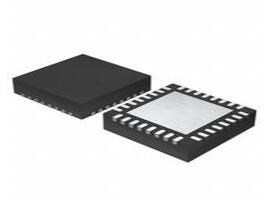 LPC824 Microcontroller: Datasheet, Pinout, NXP LPC824
LPC824 Microcontroller: Datasheet, Pinout, NXP LPC82423 August 20211685
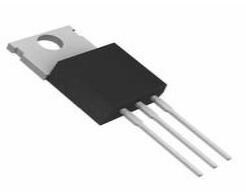 MJE13009 NPN Power Transistor: Datasheet, Pinout and Circuit
MJE13009 NPN Power Transistor: Datasheet, Pinout and Circuit25 October 20218585
 MC33079DG Operational Amplifier: Datasheet, Pinout, Alternatives
MC33079DG Operational Amplifier: Datasheet, Pinout, Alternatives03 January 20232554
 D880 NPN Transistor: Datasheet, Pinout and Equivalent
D880 NPN Transistor: Datasheet, Pinout and Equivalent25 October 20218529
 TL072CP Operational Amplifier: Datasheet, Functional Block Diagram, and Pinout
TL072CP Operational Amplifier: Datasheet, Functional Block Diagram, and Pinout16 July 20218798
![TL431ACLP Shunt Voltage Reference IC Adjustable 2.495V 100mA[FAQ]: Datasheet, Features, and Pinout](https://res.utmel.com/Images/Article/4ac425df-f9a3-4fa9-84f6-68008d9b38f1.jpg) TL431ACLP Shunt Voltage Reference IC Adjustable 2.495V 100mA[FAQ]: Datasheet, Features, and Pinout
TL431ACLP Shunt Voltage Reference IC Adjustable 2.495V 100mA[FAQ]: Datasheet, Features, and Pinout16 March 2022532
 IRF1404 Power MOSFET: Datasheet, IRF1404, IRF1404 vs. IRF3205
IRF1404 Power MOSFET: Datasheet, IRF1404, IRF1404 vs. IRF320524 November 202116094
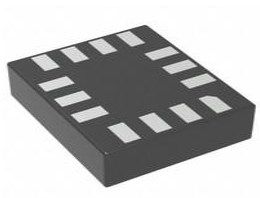 LSM6DS3 Accelerometer/ Gyroscope: Datasheet, Pinout and Features
LSM6DS3 Accelerometer/ Gyroscope: Datasheet, Pinout and Features19 August 20214634
 How does a Photodiode Work?
How does a Photodiode Work?15 August 202020937
 The Introduction of Car Fuse
The Introduction of Car Fuse09 October 20214579
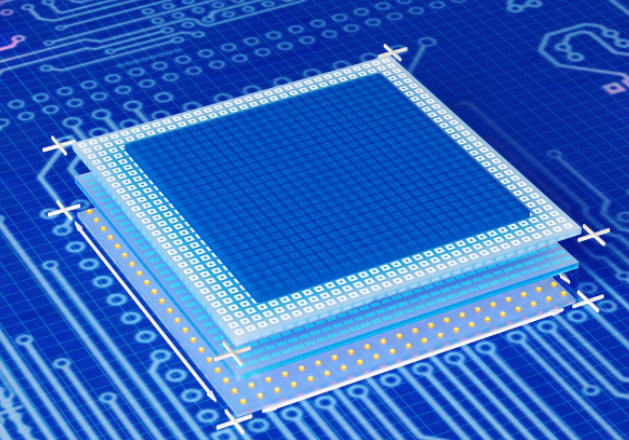 Semiconductor Sales Expected to Rebound in 2024, Driven by Innovation
Semiconductor Sales Expected to Rebound in 2024, Driven by Innovation18 December 20232926
 Semiconductor Industry Poised for $1 Trillion Growth Opportunity by 2030
Semiconductor Industry Poised for $1 Trillion Growth Opportunity by 203020 November 20232274
 Graphics Card Explained: Classification, Working and Structure
Graphics Card Explained: Classification, Working and Structure27 May 202112305
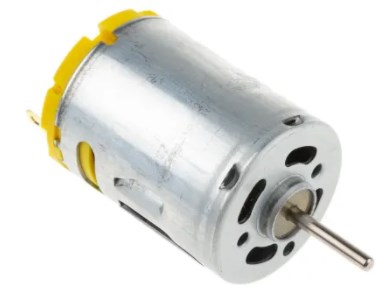 Types, Working, and Selection of DC Motor
Types, Working, and Selection of DC Motor27 March 202514468
 RF Front End in the 5G Era
RF Front End in the 5G Era25 October 20214644
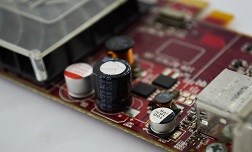 Battery Management System (BMS) Implementation Form and Chip Performance Analysis
Battery Management System (BMS) Implementation Form and Chip Performance Analysis28 April 20223253
STMicroelectronics
In Stock: 12284
United States
China
Canada
Japan
Russia
Germany
United Kingdom
Singapore
Italy
Hong Kong(China)
Taiwan(China)
France
Korea
Mexico
Netherlands
Malaysia
Austria
Spain
Switzerland
Poland
Thailand
Vietnam
India
United Arab Emirates
Afghanistan
Åland Islands
Albania
Algeria
American Samoa
Andorra
Angola
Anguilla
Antigua & Barbuda
Argentina
Armenia
Aruba
Australia
Azerbaijan
Bahamas
Bahrain
Bangladesh
Barbados
Belarus
Belgium
Belize
Benin
Bermuda
Bhutan
Bolivia
Bonaire, Sint Eustatius and Saba
Bosnia & Herzegovina
Botswana
Brazil
British Indian Ocean Territory
British Virgin Islands
Brunei
Bulgaria
Burkina Faso
Burundi
Cabo Verde
Cambodia
Cameroon
Cayman Islands
Central African Republic
Chad
Chile
Christmas Island
Cocos (Keeling) Islands
Colombia
Comoros
Congo
Congo (DRC)
Cook Islands
Costa Rica
Côte d’Ivoire
Croatia
Cuba
Curaçao
Cyprus
Czechia
Denmark
Djibouti
Dominica
Dominican Republic
Ecuador
Egypt
El Salvador
Equatorial Guinea
Eritrea
Estonia
Eswatini
Ethiopia
Falkland Islands
Faroe Islands
Fiji
Finland
French Guiana
French Polynesia
Gabon
Gambia
Georgia
Ghana
Gibraltar
Greece
Greenland
Grenada
Guadeloupe
Guam
Guatemala
Guernsey
Guinea
Guinea-Bissau
Guyana
Haiti
Honduras
Hungary
Iceland
Indonesia
Iran
Iraq
Ireland
Isle of Man
Israel
Jamaica
Jersey
Jordan
Kazakhstan
Kenya
Kiribati
Kosovo
Kuwait
Kyrgyzstan
Laos
Latvia
Lebanon
Lesotho
Liberia
Libya
Liechtenstein
Lithuania
Luxembourg
Macao(China)
Madagascar
Malawi
Maldives
Mali
Malta
Marshall Islands
Martinique
Mauritania
Mauritius
Mayotte
Micronesia
Moldova
Monaco
Mongolia
Montenegro
Montserrat
Morocco
Mozambique
Myanmar
Namibia
Nauru
Nepal
New Caledonia
New Zealand
Nicaragua
Niger
Nigeria
Niue
Norfolk Island
North Korea
North Macedonia
Northern Mariana Islands
Norway
Oman
Pakistan
Palau
Palestinian Authority
Panama
Papua New Guinea
Paraguay
Peru
Philippines
Pitcairn Islands
Portugal
Puerto Rico
Qatar
Réunion
Romania
Rwanda
Samoa
San Marino
São Tomé & Príncipe
Saudi Arabia
Senegal
Serbia
Seychelles
Sierra Leone
Sint Maarten
Slovakia
Slovenia
Solomon Islands
Somalia
South Africa
South Sudan
Sri Lanka
St Helena, Ascension, Tristan da Cunha
St. Barthélemy
St. Kitts & Nevis
St. Lucia
St. Martin
St. Pierre & Miquelon
St. Vincent & Grenadines
Sudan
Suriname
Svalbard & Jan Mayen
Sweden
Syria
Tajikistan
Tanzania
Timor-Leste
Togo
Tokelau
Tonga
Trinidad & Tobago
Tunisia
Turkey
Turkmenistan
Turks & Caicos Islands
Tuvalu
U.S. Outlying Islands
U.S. Virgin Islands
Uganda
Ukraine
Uruguay
Uzbekistan
Vanuatu
Vatican City
Venezuela
Wallis & Futuna
Yemen
Zambia
Zimbabwe







